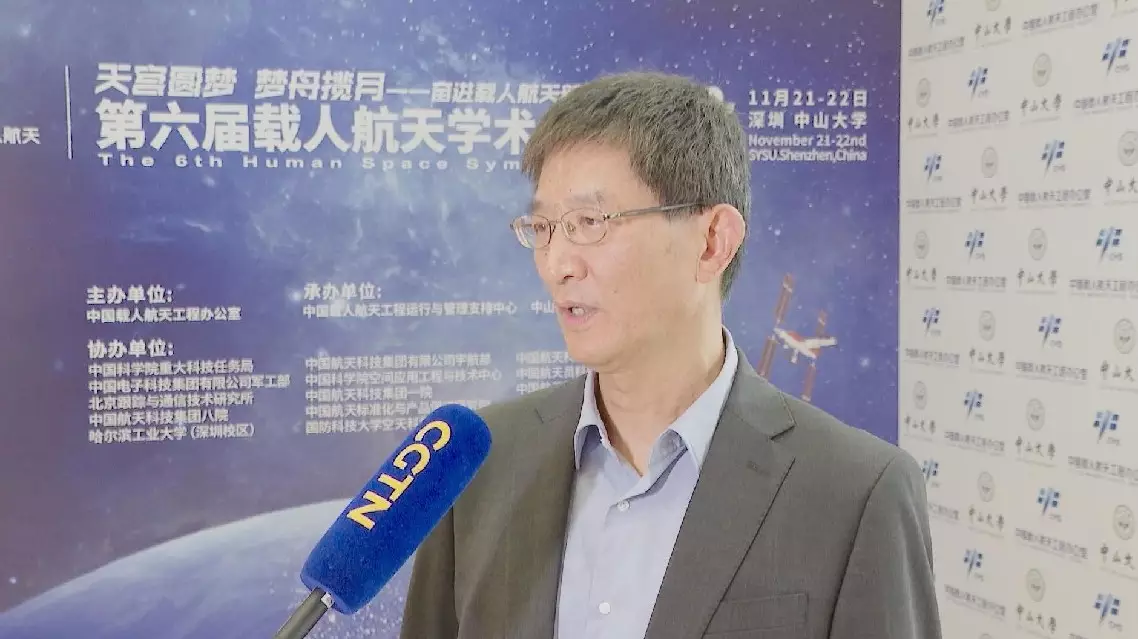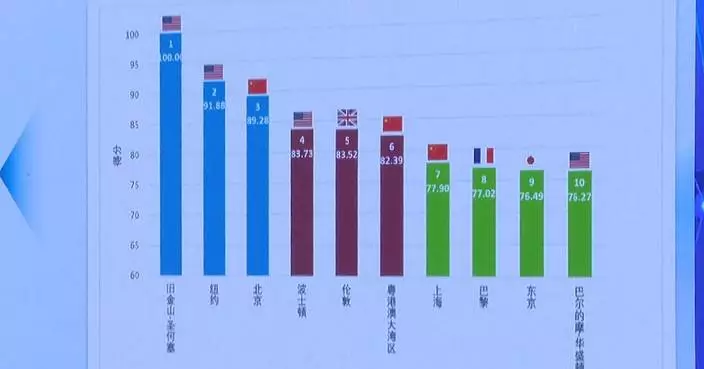The Hong Kong Special Administrative Region (HKSAR) has seen increasingly deeper participation and played a more active role in China's space development, said Sun Qingping, a professor of Mechanical Engineering from Hong Kong University of Science and Technology, who attended the sixth Human Space Symposium.
The two-day symposium started on Thursday in Shenzhen, south China's Guangdong Province, and brought together over 800 experts and scholars from the manned space field to share cutting-edge academic research results and discuss the development blueprint of China's manned space program.
In an interview with China Global Television Network (CGTN), Sun said that the region is establishing a space robotics and energy center to better take part in national space endeavors.
"Hong Kong's participation in the nation's space development has increased. The Hong Kong Space Robotics and Energy Centre being established by the Hong Kong government is a large-scale scientific and technological innovation and R&D platform in Hong Kong. It is also the largest space technology R&D project in Hong Kong's history. This project will boost the ecosystem of space science research in Hong Kong and drive related high-tech industries," he explained.

Hong Kong's participation in national aerospace development increasing: expert
The first group of China's 41st Antarctic expedition team has arrived at Qinling Station in Antarctica, the country's fifth research station on the continent.
The station, located on the Inexpressible Island in the Ross Sea, was officially inaugurated in February. Covering an area of 5,244 square meters, the station is in a shape resembling the Southern Cross constellation, a unique design to honor Zheng He, a legendary admiral, navigator and diplomat in the Ming Dynasty (1368-1644).
The first group of the team consists of 34 individuals with expertise in management, security, and construction. Upon arriving at the Qinling Station, they immediately began operations, deploying three excavators, two loaders, and two 100 kW generators. By the end of the day, the station's power supply function had been largely restored.
"After standing through the entire winter, the main building of Qinling Station remains intact, with its structure confirmed to be safe and reliable. Next, we will implement projects involving new energy systems and outdoor pipelines to make comprehensive preparations for the deployment of various systems," said Wang Zhechao, chief of the Qinling Station.
China's 41st Antarctic expedition team set off from Guangzhou City, south China's Guangdong Province, on Nov 1, taking the research icebreakers Xuelong and Xuelong 2, or Snow Dragon and Snow Dragon 2, as well as cargo vessel Yong Sheng.
In the coming months, researchers will build the supporting infrastructure for the Qinling Station, investigate the impact of climate change on the Antarctic ecosystem, and conduct international research and logistics cooperation.

First group of China's 41st Antarctic expedition team arrives at Qinling Station










